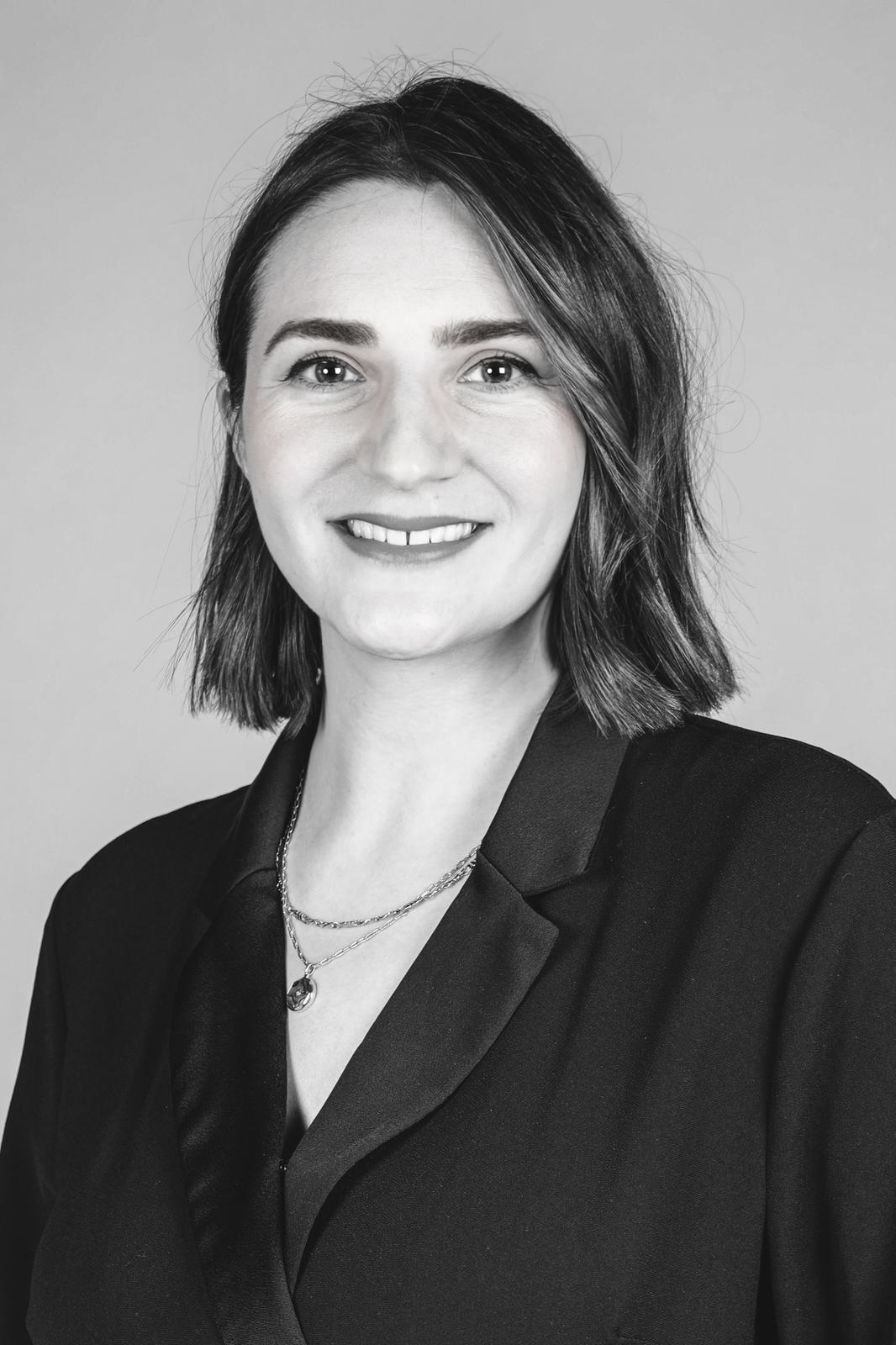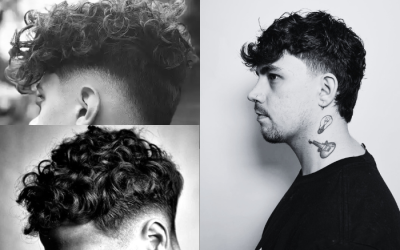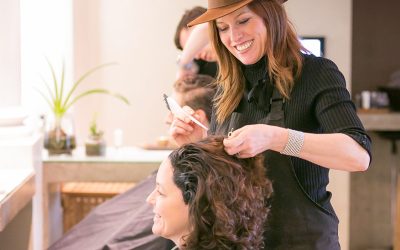SILVER LINING
For decades, we’ve been taught to cover grey. Now we should help clients embrace it, says colourist Nancy Stripe – it could be the best thing you’ve done for your business in years.

Nancy Stripe
When it comes to grey hair, real change is afoot. In 2024, it’s a statement of confidence and intent. Whether on the red carpet (Emma Thompson, Lady Gaga, Andie McDowell); among the fashion crowd (British Vogue’s Sarah Harris, Erin O’Connor, Jan de Villeneuve); or even on the world stage (Christine Lagarde and Princess Caroline), women of all ages are embracing a hair colour that for many years was seen as a sign of “letting yourself go”.
Leading the charge here in the UK is colourist Nancy Stripe (owner of Stripe Studio in Handforth, near Manchester), whose interest in grey was piqued when several of her clients who worked in and around fashion (30-, 40- and 50-year-olds) said they’d had enough of their male counterparts being labelled Silver Foxes and decided to wear their Silver Vixen crown. Stripe’s decision actively to market to grey conversion clients has not only been lucrative for her business (clients have been known to spend £600+ in a single appointment), it’s also led to a new education course, Embrace the Grey, that’s rolling out this year in partnership with L’Oréal Professionnel Paris.
So, when is it time to have a conversation about going grey? “As early as possible,” says Nancy, “because if you start blending the grey earlier, the eye gets used to seeing the grey in the hair. When women wait until they have a more solid amount of grey, they go from looking like they’ve got solidly warm colour hair to maybe being fully grey, and that jump is too much. It makes them feel old.” Clues to look out for that a client might be ready and willing? “When they say they’re sick of coming to the salon every three to four weeks, or they’ve got a white band around the hairline. But lots of clients are still worried about what others might think, so you’ve got to be ready with the support and encouragement.”
Transitioning to grey is a long and winding road – you’re looking at around a year, with some challenging moments along the way – so that initial consultation is absolutely vital. Says Nancy: “Key questions to ask include, How much grey are they comfortable seeing? Do they want a more fashionable grey placement? Are they willing to consider a different – possibly edgier – haircut, or will they look to retain their youthfulness through sharper clothes and make-up? Grey hair is naturally coarser, so you will also need to assess the condition properly before going ahead with any lightening methods, and also how much lift the hair can take because that will determine how many sessions will be needed to achieve the finished result. It’s vital you give your client realistic expectations.”
Is it going to be expensive? Yes, it is. But as Stripe argues, it’s highly likely these clients are already investing in expertly applied Botox and fillers (subtle enhancements being the order of the day), so cost tends not to be a deterrent. “I am very strict with my clients. I let them know there will need to be treatment plans, specialist products and if you don’t think you can do it, we can always go back to full coverage. But it’s usually three to four appointments down the line where they think, Okay, here we are. Bingo!”
Stripe has identified four distinct client types, each with a different attitude to embracing grey, and each, therefore, requiring a different approach in her chair.
• The Embracer (role model, the actress Andie MacDowell) is excited to explore their natural grey patterns and wants to keep as much of the natural as possible. She will be looking to get maximum longevity from the colour. You’ll mainly be using babylights and balayage with this client, with powerful lighteners (where the hair can take it) and glossing.
• The Blender (à la Jennifer Aniston) wants to work with her natural grey to create a new canvas of blonde and balayage through her hair. She wants to retain a definite coloured look and will be back in the salon every three months for top-ups. High-level lifting will be required, with lots of coverage but easy to grow out.
• The Illusionist (as illustrated by actress Sarah Jessica Parker) wants to look as close to her darker base as possible, but with a softer grow-out She’ll be back in the salon within eight weeks, like a global application would be, but with a gentler blend. She’ll mainly need coverage in foils, but perhaps also some lightening and glossing.
• And finally, there’s The Bold (think, model Erin O’Connor). She may want an edgier look, such as a solid piece of her natural grey in the hairline and the rest of her hair kept darker.
Potential problems to look out for? Clients will feel their hair is too light, as they are so used to being a brunette. In this case, darken only with low lights and leave grey placement. Highlights may go too warm so there is too much contrast against the grey. In this case, use the strongest lightener possible and in fine sections for maximum lift, alongside a treatment plan (Stripe swears by L’Oréal Professionnel Paris’s Absolut Repair Molecular). And if the tint used for coverage in lowlights is fading too warm against the natural, then it’s causing too much of a shift in the undercoat, so go with a cool reflect for a truer tone and a softer fade.
For decades, colourists have been conditioned to cover grey. Now, it turns out that helping your clients transition to grey is not only an impressive showcase of your technical skills, it may also provide you with incredible job satisfaction. Says Stripe: “I’m 40 next year and as you age, things change. You change, your clients change. My 20-year-old self would have thought having an older client base would be so boring. But now I know what great people these clients are to have in your life. The conversations we have are brilliant and quite exciting, actually!”

GOING GREY
- The start of Michelle’s journey and her two-week dreaded regrowth that made her re-think her approach to coverage.
- After starting to go lighter, she still felt like the regrowth line was too severe and wanted a much more natural grow-out.
- Session 2 of grey blending and we can see the grey is starting to become part of the fabric of her hair. Object today was to lighten the face frame and melt the colour together to create more depth and dimension.
- The result from session 2.
- L’Oréal photo-shoot day. Now very established in the grey blending technique, Michelle is getting four months in between salon visits. Today we got to try the new Dia Color shades as it offers up to 70 per cent coverage.
- Our stunning result. What a difference from when we first started!

Book the course:
Navigating Grey with Nancy Stripe
£220 per person
Leeds – 3 June 2024
Cardiff – 24 June 2024
London – 12 August 2024
Edinburgh – 9 September 2024
Register
Related
“Quite Frankly, The Manufacturers Have Abandoned This Industry” – Why Boots Was A Step Too Far For Keune Boss Darren Potter
Should pro hair brands cut out the hair pro and sell direct to the consumer? Darren Potter doesn’t think so.
Riding The Wave: The Perm Is Back – But Not As We Knew It
Things have come a long way since Dirty Dancing’s Jon and Baby mega-curly numbers
Looking For Your Next Colour Technique? Convertible Colour Is A Fresh Way to Deliver Bespoke Results
Gina Conway’s technique blends bold colour with everyday wearability










